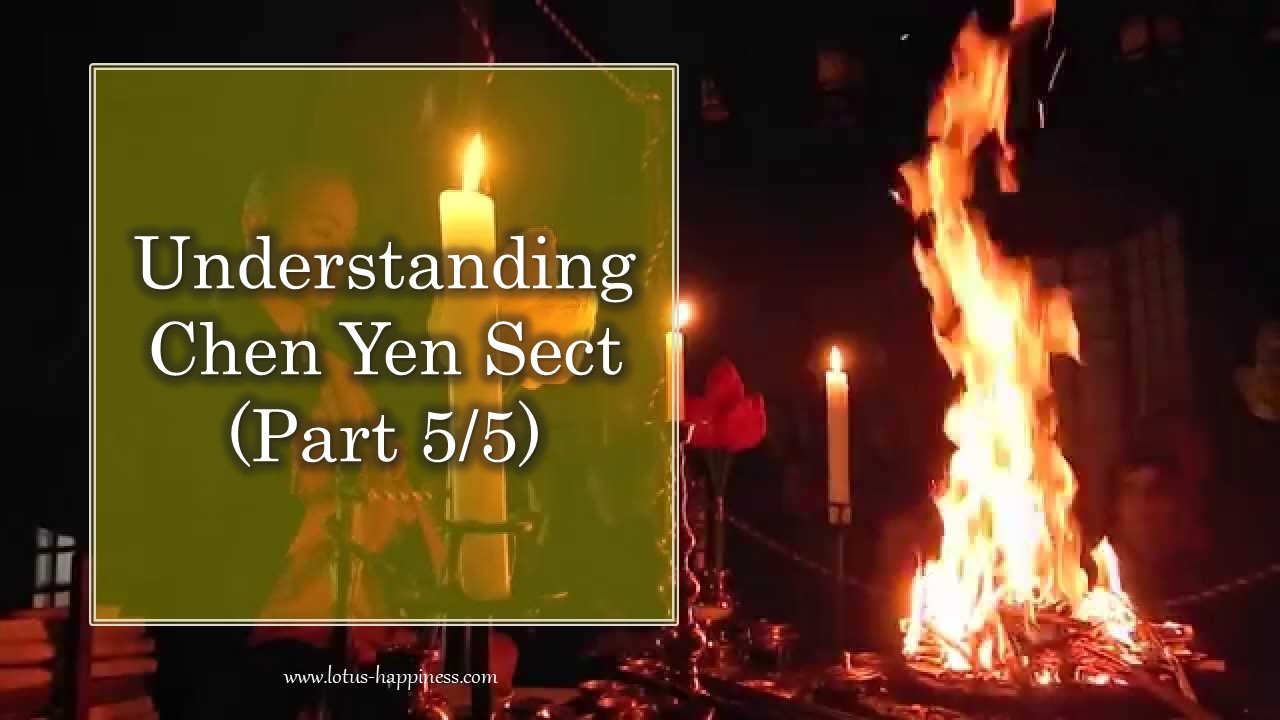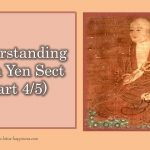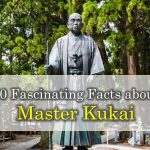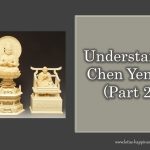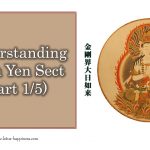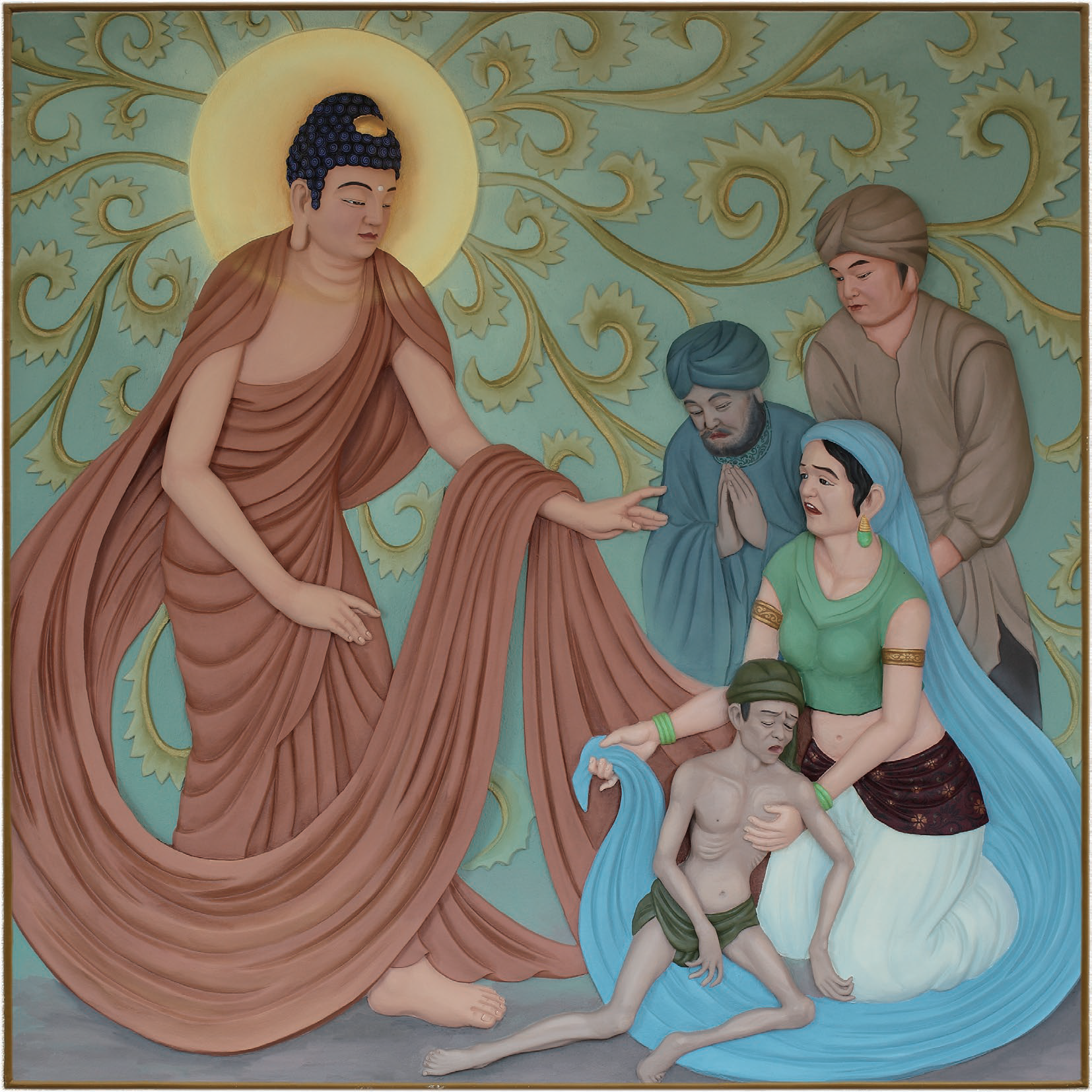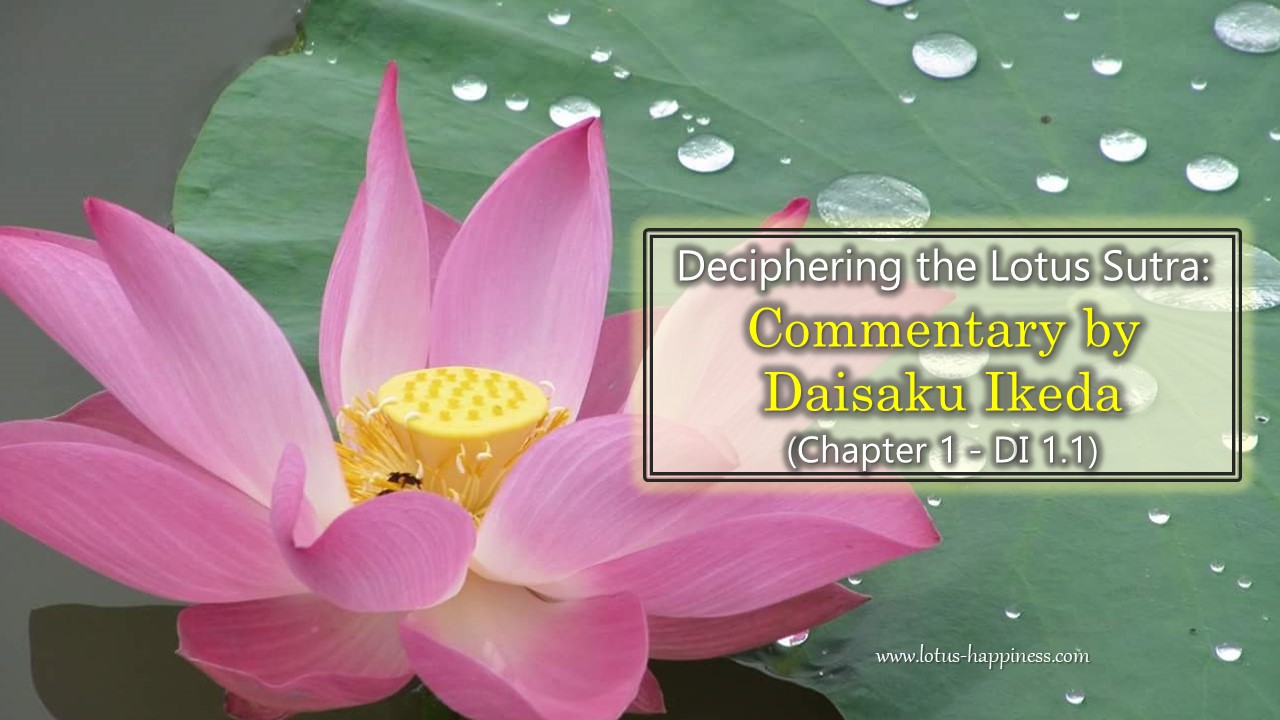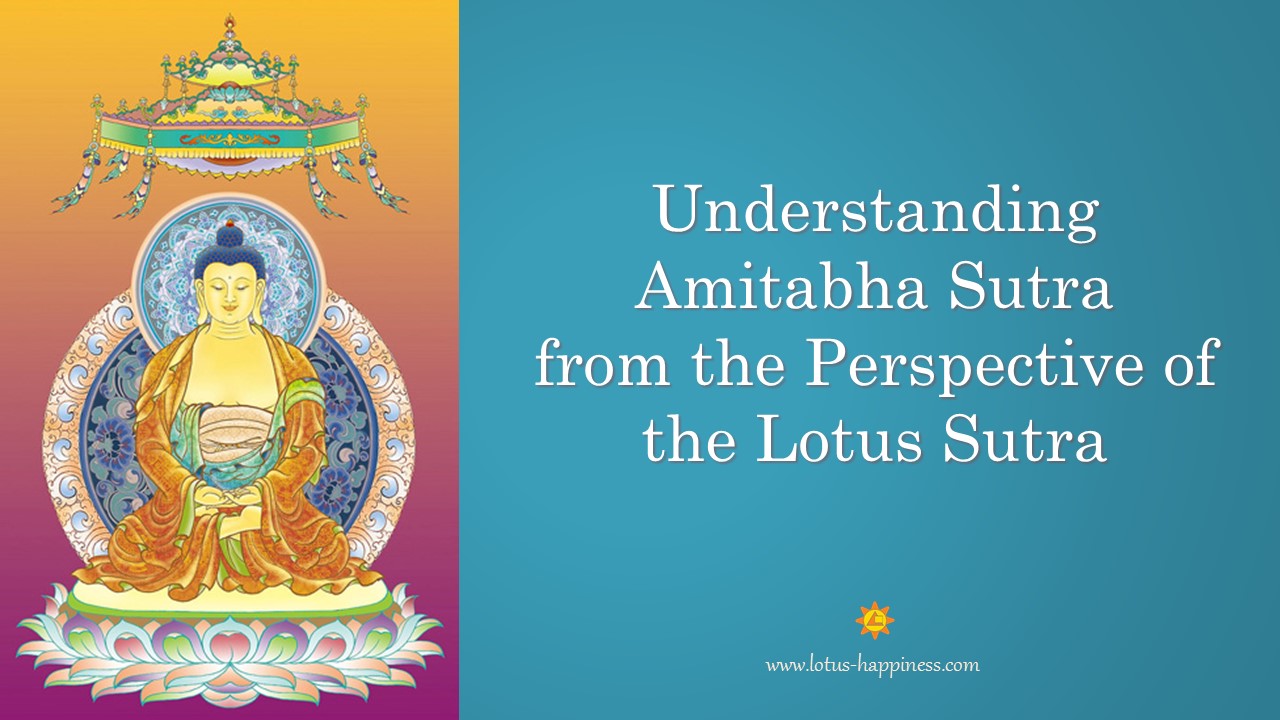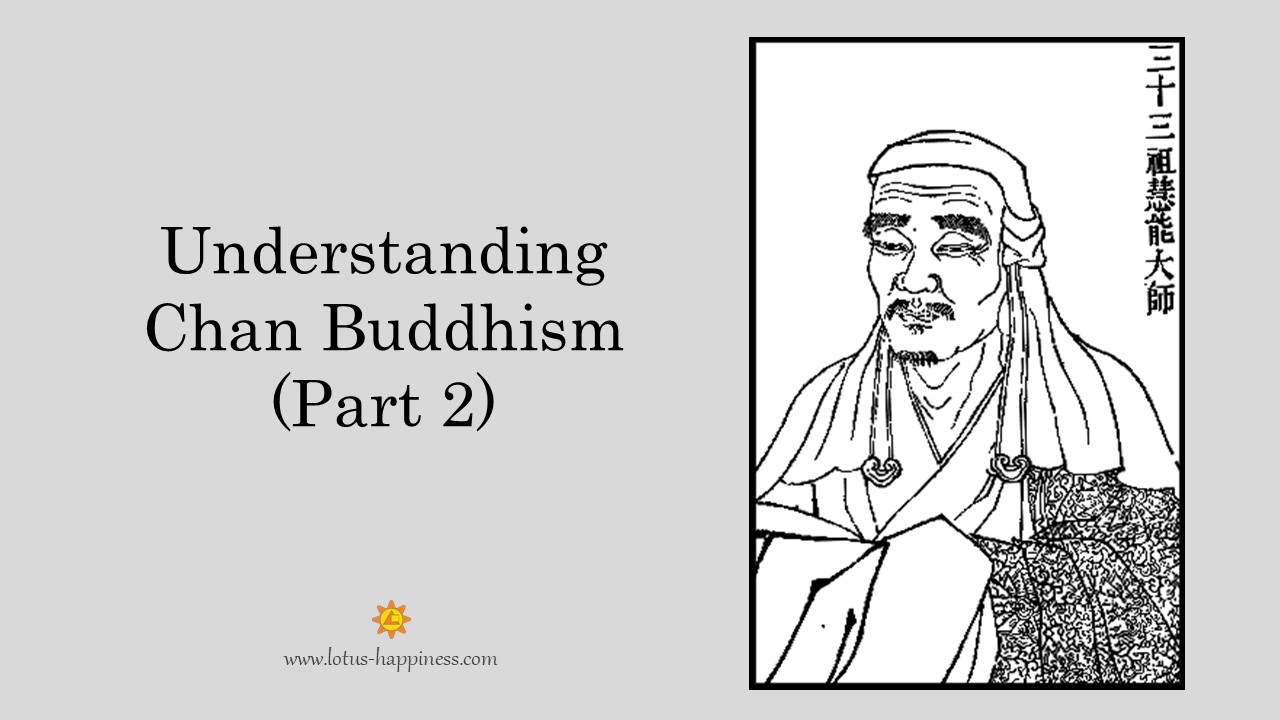Understanding Chen Yen Sect (Part 5/5)
Five Kinds of Dharma Body
In Cheng Yen sect, all teachings are established on the ground of Buddhas, i.e. the manifestations of the Dharma Body of Buddhas as the results of the cultivation of Buddhahood. There are five kinds of Dharma Body, which are all incorporated in the Dharma Body of Vairocana Buddha, covering all Buddha and Bodhisattva in ten directions and in three periods, deities and dragons, gods and ghosts, sentient and non-sentient beings and all others. They are:
- Dharma Body of Self-nature [自性法身]– the real body of all Buddhas, which is the nature of Dharmas and the ration of all. It is naturally perfect and complete, permanent in all times. It is the source where the Dharma of Three Mysteries comes out.
- Dharma Body of Self-enjoyment [受用法身]– There are two kinds, one is self-use and the other is use for others. The former is his own body, which corresponds to the ration/law. The latter is the appearance of the body for the sake of teaching the Bodhisattvas in ten stages, which corresponds to the wisdom.
- Dharma Body for Transformation [變化法身]– For the sake of probationary Bodhisattvas and those in Two Vehicles, the Buddhas appear their magnificent bodies in order to explain the Dharmas certified with personal experience.
- Dharma Body for Equal Spreading [等流法身]– This body is delivered equally for the beings in the other nine realms. The body is appeared in the same form of the beings, which will be taught of the Dharmas in accordance with their interests and understanding.
- Dharma Body of Dharma Realm [法界身]– The Dharma Body of The Buddha consists of Six Essential Elements, pervading the entire Dharma realm in all directions.
Ordinary Non-production of the word ‘A’ [阿字本不生]
According the theory of Cheng Yen sect, the fundamental origin of all things must be the Dharma of non-birth. Thus, whatever is the cause of any Dharma is not the fundamental origin.
‘A’ [阿] is translated as ‘none’, or true emptiness. It is the mother of all vowels and consonants, the seed of all words. It represents the substance of Real Mark Prajna, which is non-production and non-extinction.
Different from the teachings of other sects, the teachings of Chen Yen sect is so profound and sophisticated that ordinary people are difficult to understand. It belongs to the realm internally experienced by the Buddhas. That is why it is called esoteric teachings. It cannot be generally explained by other Buddhist doctrines.
Vairocana Buddha
Vairocana Buddha plays an important role in esoteric Buddhism. According to Cheng Yen sect, the profound teaching that is taken to be the absolute truth, is expounded by Vairocana Buddha. He is the cosmic Buddha, the central Buddha and it’s the universe itself, without beginning or end. He manifests himself through perfect harmony of the Six Great Elements, i.e. Earth, Water, Fire, Air, Space and Consciousness. He represents the Dharmakaya, which is common to all Buddhas.
Abhisheka
Abhisheka, also known as Murddhadja [灌頂] is a very important rite in Tantrism, as it is regarded as the starting point in the path of Buddhahood. Just like baptism, it is a consecration ceremony administered by sprinkling or pouring water on the head. Abhisheka is necessary and essential for the practitioner as an initial step to enter the Mandala and ‘explore’ the secrets of the Tantric Buddhism.
Abhisheka, sometimes written as Abhishekair, is an exclamation addressed in the prayers to Tathagatas in the ceremony, saying ‘consecrate me by sprinkling’.
Satyadevata / Sadhanas
In Tantric practice, the practitioner is usually required to set a particular aspect of enlightenment to work with. Accordingly, the respective Buddha or Bodhisattva will be recommended to the practitioner by the Guru, that is appropriate to the personality and the needs of the practitioner. For instance, if the practitioner wishes to tune into and develop compassion, the Tara manifestation will be cultivated as a kind of role model. Then, the practitioner will contemplate the chosen deity through the special meditation session, known as Satyadevata / Sadhana?
Though Sadhana varies considerably in its complexity and duration, the practitioners are generally required to cultivate Sadhana regularly on a daily basis and to achieve the state of calmness in meditation. The use of the Mantra with respect to the chosen deity is essential for entering the state of emptiness, and then generating the specific image of the chosen deity within the practitioner’s mind and seeing himself as that deity.
The body form of the deity during initial phase of transformation is known as ‘Samaya-sattva’, i.e. ‘commitment being’. The Samaya-sattva is not the deity itself, but a symbolic form used in the process of self-realization.
A particular letter or syllable, color or sound is then generated from the body form. Later, rays of energy will radiate out from the syllable and fill the entire universe. Then, the practitioner invokes and invites the deity to come to them externally? though it is understood that the deity is an inherent aspect of an individual’s own enlightened mind in reality. The actual form of the deity is called Jnana-sattva? or ‘awareness being’. Accompanied with a set of four Mudras, the practitioner draws down the actual deity with a designated Mantra.
After engaging the Mantra recitation silently for some time, the practitioner may become tired. It is recommended to draw the radiating light energy back to the heart and rest. The mental recitation and accompanying visualization can be resumed if desired, or else the session can be brought to the end. To conclude the Sadhana, the practitioner should reverse the process of generation, i.e. to release the ‘awareness being?, then ‘commitment being’ then to contract the light energy and disappear back into the state of emptiness from which it arose. The practitioner should rest peacefully for as long as possible in this state.
Various accomplishments, known as ‘Siddhi’ may be acquired through these Sadhanas.
Some are mundane while the others are supramundane.

